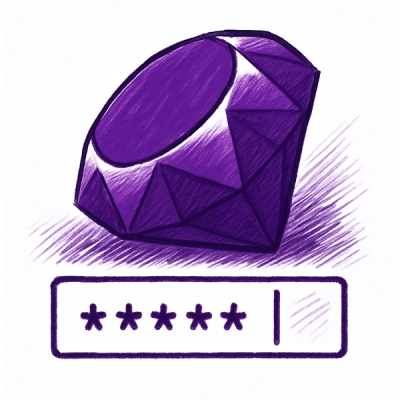
Research
/Security News
60 Malicious Ruby Gems Used in Targeted Credential Theft Campaign
A RubyGems malware campaign used 60 malicious packages posing as automation tools to steal credentials from social media and marketing tool users.
quickemailverification
Advanced tools
Official QuickEmailVerification API library client for node.js

QuickEmailVerification provides the quickest way to avoid fake / invalid emails.
To begin, signUp at quickemailverification.com and create a FREE account. After signup logged in, click on API Settings and then click Add API Key. To use API you need 2 parameters.
email - (string) This is a email address you need to verify. It should be url encoded.
apikey - (string) This is the key you generated from "api settings" page.
NOTE: Keep API key with you. - you'll need it to setup the client as explained below.
Make sure you have npm installed.
$ npm install quickemailverification
Works with [ 0.8 / 0.9 / 0.10 / 0.11 ]
var quickemailverification = require('quickemailverification').client('Your_API_Key_Here').quickemailverification();
// PRODUCTION MODE
quickemailverification.verify("test@example.com", function (err, response) {
// SANDBOX MODE
//quickemailverification.sandbox("valid@example.com", function (err, response) {
// Print response object
console.log(response.body);
});
A successful API call responds with the following values:
result string - The verified results will be: valid, invalid, unknown
reason string - Reason definitions are as below:
invalid_email - Specified email has invalid email address syntaxinvalid_domain - Domain name does not existrejected_email - SMTP server rejected email. Email does not existaccepted_email - SMTP server accepted email addressno_connect - SMTP server connection failuretimeout - Session time out occurred at SMTP serverunavailable_smtp - SMTP server is not available to process requestunexpected_error - An unexpected error has occurredno_mx_record - Could not get MX records for domaintemporarily_blocked - Email is temporarily greylistedexceeded_storage - SMTP server rejected email. Exceeded storage allocationdisposable true | false - true if the email address uses a disposable domain
accept_all true | false - true if the domain appears to accept all emails delivered to that domain
role true | false - true if the email address is a role address (manager@example.com, ceo@example.com, etc)
free true | false - true if the email address is from free email provider like Gmail, Yahoo!, Hotmail etc.
email string - Returns a normalized version. (Niki@example.com -> niki@example.com
user string - The local part of an email address. (niki@example.com -> niki)
domain string - The domain of the provided email address. (niki@example.com -> example.com)
mx_record string - The preferred MX record of email domain. This field contains empty string when MX record is not available.
mx_domain string - The domain name of the MX host. This field contains empty string when MX record is not available.
safe_to_send true | false - true if the email address is safe for deliverability
did_you_mean string - Returns email suggestions if specific typo errors found in email
success true | false - true if the API request was successful
message string - Describes API call failure reason
Total remaining credits can be found by http response header. It contains overall remaining credits, including Persistent & Per day credits.
QuickEmailVerification API also returns following HTTP status codes to indicate success or failure of request.
200 - Request is completed successfully400 - Server can not understand the request sent to it. This is kind of response can occur if parameters are passed wrongly.401 - Server can not verify your authentication to use api. Please check whether API key is proper or not.402 - You are running out of your credit limit.404 - Requested API can not be found on server.429 - Too many requests. Rate limit exceeded.QuickEmailVerification single email verification API sandbox mode helps developers to test their integration against simulated results. Requesting against sandbox endpoint is totally free and no credits will be deducted from actual credit quota.
Please refer our knowledge base to learn more about sandbox mode.
MIT
Report here.
FAQs
Official QuickEmailVerification API library client for node.js
The npm package quickemailverification receives a total of 409 weekly downloads. As such, quickemailverification popularity was classified as not popular.
We found that quickemailverification demonstrated a not healthy version release cadence and project activity because the last version was released a year ago. It has 1 open source maintainer collaborating on the project.
Did you know?

Socket for GitHub automatically highlights issues in each pull request and monitors the health of all your open source dependencies. Discover the contents of your packages and block harmful activity before you install or update your dependencies.

Research
/Security News
A RubyGems malware campaign used 60 malicious packages posing as automation tools to steal credentials from social media and marketing tool users.

Security News
The CNA Scorecard ranks CVE issuers by data completeness, revealing major gaps in patch info and software identifiers across thousands of vulnerabilities.

Research
/Security News
Two npm packages masquerading as WhatsApp developer libraries include a kill switch that deletes all files if the phone number isn’t whitelisted.